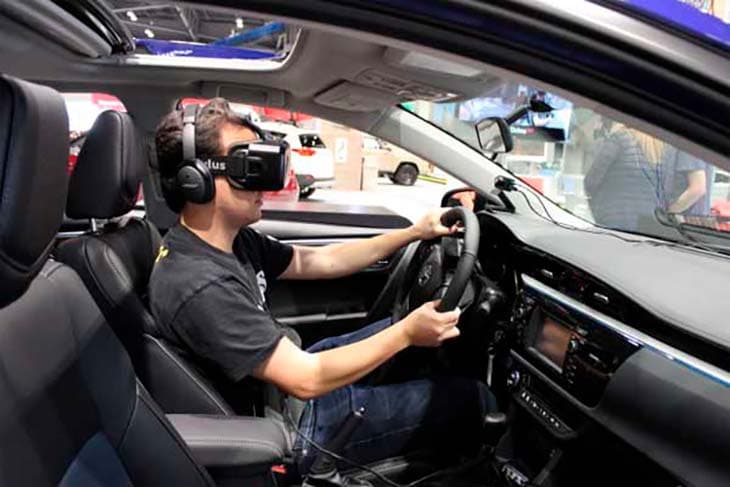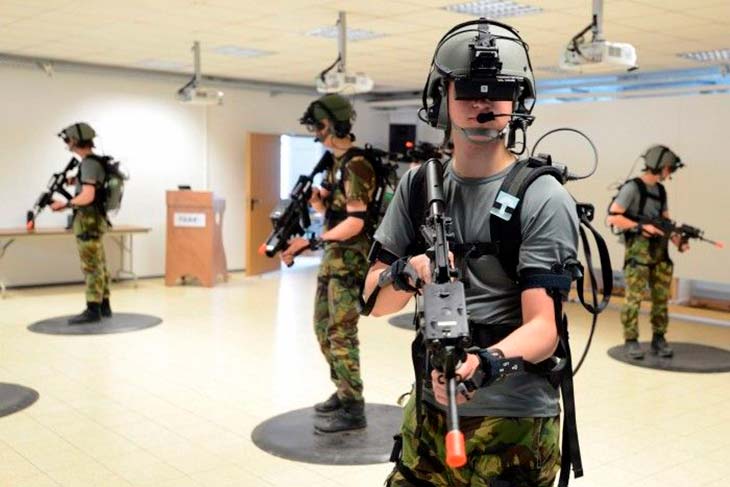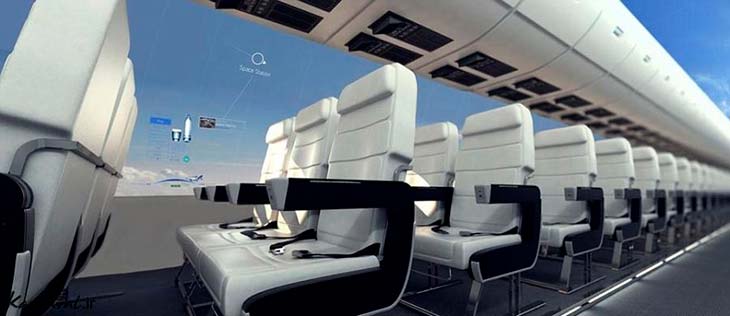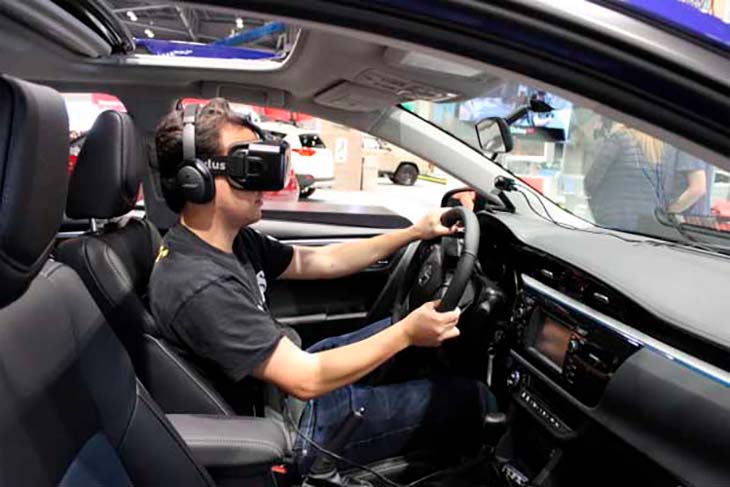
Unusual VR Uses You Might Not Have Imagined
Since the release of the Virtual Reality headsets this year, VR has exploded into brand new industries that previously never thought could utilize virtual reality. Now, companies are all trying to maximize their sales and efficiency using virtual reality. See how these industries are making the most of this new technology below.
Military Simulators and Training

Videogames have been used in the military dating all the way back to the Atari to improve shooting and strategy capabilities, but now troops have the ability to practice real drills in real situations without having to leave their home base. A UK electronics design company called Plextek has been working closely with the British Military to come up with newer, more advanced simulators that use this newer technology. Using headsets like the Oculus Rift or HTC Vive, troops can suit up alongside their comrades and be submerged in thedesert on a realistic virtual mission to help improve teamwork and decision making when forced into high stress situations.
In addition, VR headsets allow soldiers to experience drills that would otherwise require them to actually be in the field, such as skydiving and parachuting to a specific landing point. Soldiers suit up and strap into a harness, adding the VR headset and a giant fan to simulate the wind they would feel jumping out of a plane. All of this can now be done inside a base, where soldiers don’t have to leave to practice and perfect difficult operations such as this.
The military is already seeing huge benefits in training with VR. New recruits are joining rapidly, and most of them are younger than previous averages. These new soldiers are used to playing video games, and usually excel not only at the VR training sims, but also at using the new technology that is being used to fly drones and surveillance for the military. Using Xbox controllers and even some newer designs have helped soldiers improve their flight capabilities when controlling these drones, increasing the number of successful operations that the military is doing. Video-game technology has helped the military for over several decades, and VR is helping them reach that next step in excellence to provide safety and protection to our country.
Museums & Travel
We’ve seen how VR can transport military to a virtual battlefield, but did you know that it is also being developed for the average civilian as well? You won’t be seeing a gruesome battlefield, though. Instead, you can interact with President George Washington, or look at the Mona Lisa in Paris, France. Museums have become more interactive over the last few years, including the addition of virtual reality rollercoasters that will take viewers through crazy rides and stories from the comfort of theater chairs. Other exhibits feature interactive historic figures like George Washington or famous artists and American Indians that allow for a new learning environment without monotone tour guides to bore children (and adults) to sleep. VR is making the movie Night at the Museum a real life exhibit experience. Art museums around the world are also coming up with remote virtual reality that you can view on VR capable devices to experience exhibits at The Louvre in Paris, France from the comforts of your own home.

The airplane industry has also taken VR down the runway, using VR headsets to improve in-flight entertainment for first-class passengers. No more are there tiny, low pixel screens on the backs of the seat that is constantly moving in front of you. Now, airlines like Australian company Qantas are using VR headsets to immerse its passengers into an entirely new flying experience. They provide some videos and movies for passengers to view, and it is only a matter of time before Netflix or Hulu start providing VR content for streaming. In addition, a company called Trillenium has created the first windowless airplane. Passengers are riding in an airplane with no windows, but have VR headsets that make their view seem like the entire plane top is one solid window using cameras on the outside of the plane. The view is like you are a bird, flying through the clouds while you are journeying to your destination.
Automobile Manufacturing
When you think of VR, the first thing that comes to mind is definitely not wearing an Oculus Rift or HTC Vive in a brand new car, is it? Well, that’s exactly what car companies today are doing. Using VR, companies are revolutionizing their design and manufacturing process, as well as their car selling process. In the design process, companies like Ford and Chevrolet are looking at their cars before the first model is ever built. In Ford’s “immersion lab”, engineers and design teams can view and critique the exterior and the interior of the car and make changes to their design without having to spend time and other resources building a concept car to see that there are flaws with the design. Ford has been using this VR idea since 1999, but because of the headsets available, Ford can now completely surround themselves in the model visually, without looking at a 2D screen. These headsets are also bringing teams from different parts of the world together through “conference calls” in order to share design ideas with people who can’t physically be in the room.

Most car customers are more informed now than ever thanks to the internet. VR is taking it one step further. Some car companies have begun to take Oculus Rift headsets into the homes of consumers that allow them to see and be in the car of their choosing. Apps are making features more readily viewable in a virtual way, allowing sales associates to answer questions directly to customers in their homes about the features and models that they are looking at through the headsets. Others like Audi and Ferrari are making the decision process faster by using VR to help customers select trim models, colors, and special custom additions that normally they would only see in person once their car arrived from the factory. Toyota is even using VR to educate drivers on the dangers of driving while distracted, using the headsets to demonstrate how driving distracted could go horribly wrong. Currently, the auto industry is moving towards using VR headsets to allow customers experience a test drive, without having to actually drive the car in real life.
VR headsets are allowing companies and consumers alike to reach greater potential by allowing them to see new things in a whole new way. AVADirect can help too, providing VR compatible computers ranging from home desktops to portable, durable laptops. Click here to see how AVADirect can get you started in the immersive world of virtual reality.

Why Choosing a Pre-Built System is Crucial in 2025/2026
